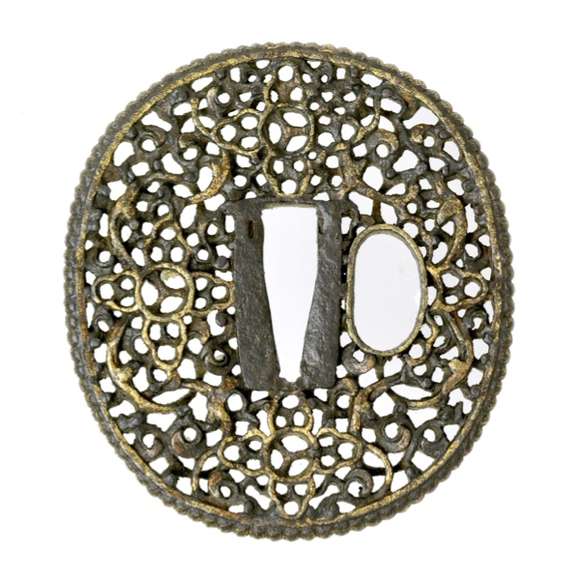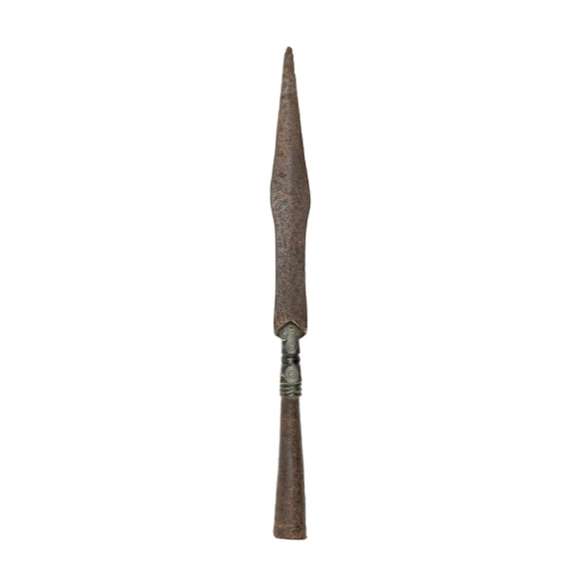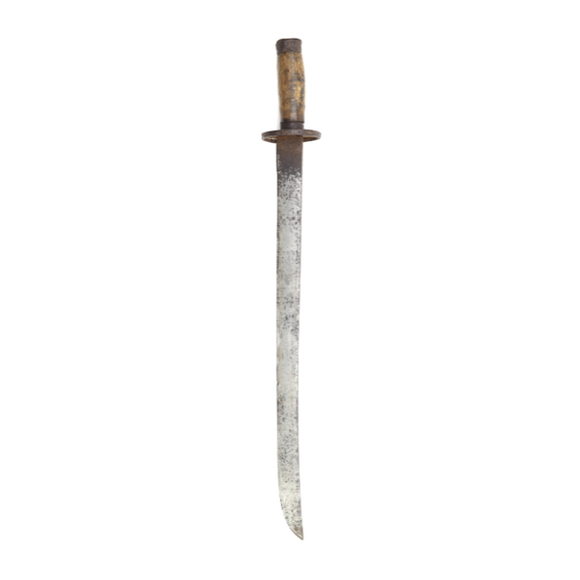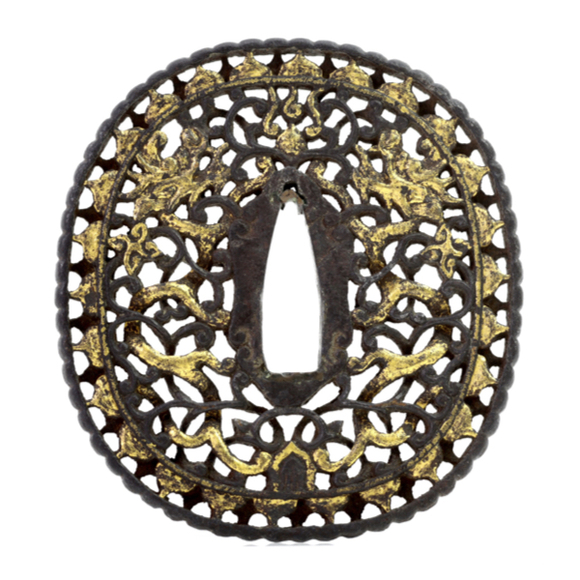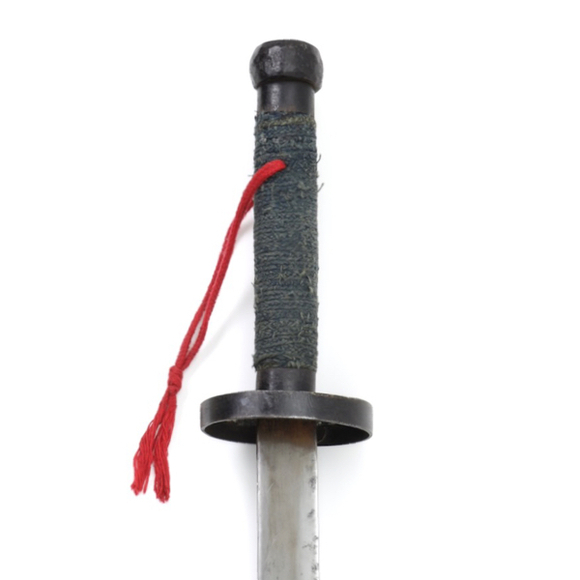A very rare Chinese saber guard dating from the height of the Qing dynasty.

94.8 cm / 37.3 inch
77.6 cm / 30.5 inch
forte 6 mm
middle 4 mm
near tip 3 mm
760 grams
20.2 cm from handle side of guard
Introduction
The Chinese straightsword or jian (劍) was the side arm of the Chinese literati. Their blades relatively wide and heavy compared to straightswords of other cultures, the Chinese jian has good thrusting and cutting abilities. Because they were made for a small elite, there were never many jian in production in China compared to weapons used by the military. Due to the popularity of the practice of taijiquan jian forms today, the demand for good antique jian creates steady demand for an already scarce item.
Today, most jian on the market are from the time when Chinese martial arts made their transition from fighting arts to health practices. As such, they are often of soft steel and not sharp. Actual fighting examples such as this one have become increasingly hard to find.
This example
An antique Chinese jian from the 19th century with some interesting features. Its blade is chiseled on one side with a dragon chasing a flaming pearl, a common motif on civilian swords of the late Qing. The other side is marked 勅魔 "chì mó" in a script common on Taoist charms. It translates roughly to "warding off demons by means of Taoist magic". Under that, in cursive script, is 龍泉 longquan, the famous sword-making center in Zhejiang where the sword was probably made.
Blade has a so-called "male point" of triangular shape with two straight edges leading to the acute point, where the common jian would have two rounded edges leading up to the tip. This is a feature often seen on smaller Taoist ritual jian but rarely on a full length, fighting quality piece like this one.
The blade is further decorated with seven brass dots, representing the Big Dipper, an important constellation in Taoism. A light polish and etch revealed a nice and controlled lamellar pattern, with a hard high-carbon edge sandwiched between layers of milder steel.
Hilt is all original, with original brass fittings, old handle and original grip wrap in brown silk over red paper. Everything is well preserved and still tight, even the old silk grip wrap. It sure warded off the often evil effects of aging so far!
The guard is of classic style with a zoomorphic guard with the character 王 or "king" on its forehead, suggesting it is a tiger. There is something interesting going on here, too: Tiger is pronounced "hu" in Chinese which sounds the same as "to protect". For this reason, tigers feature on shields and also children's hats to protect them from evil.
The ferrule shows an archaic kui dragon motif in pierced openwork, and the pommel has a chiseled decor of a coiled kui dragon on either side.
Conclusion
An interesting antique Chinese sword full of Taoist symbolism. The large sword has a blade that is of good quality and is in very good condition. The quality of the workmanship is comparatively good.
The charm on the blade and the male point suggest it may have been seen or used as a talisman that could ward off evil spirits. Despite its ceremonial meaning, it is a full-fledged fighting piece with a fairly heavy, well-made blade.
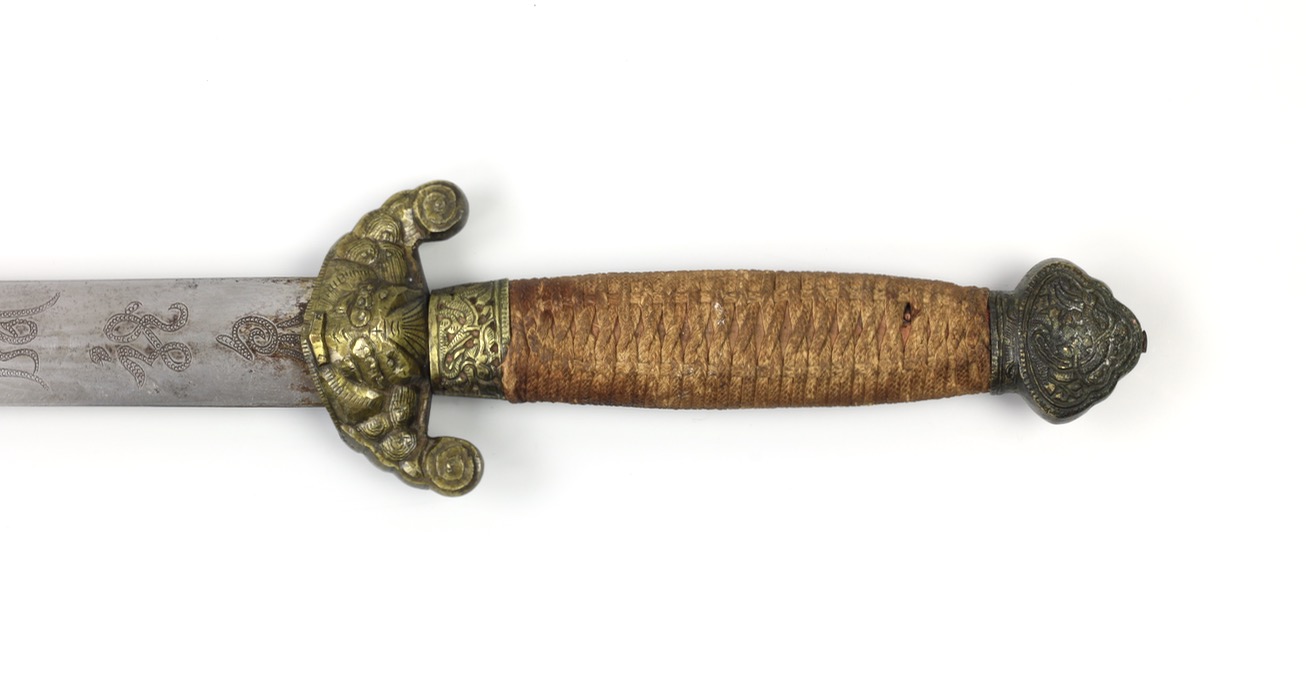
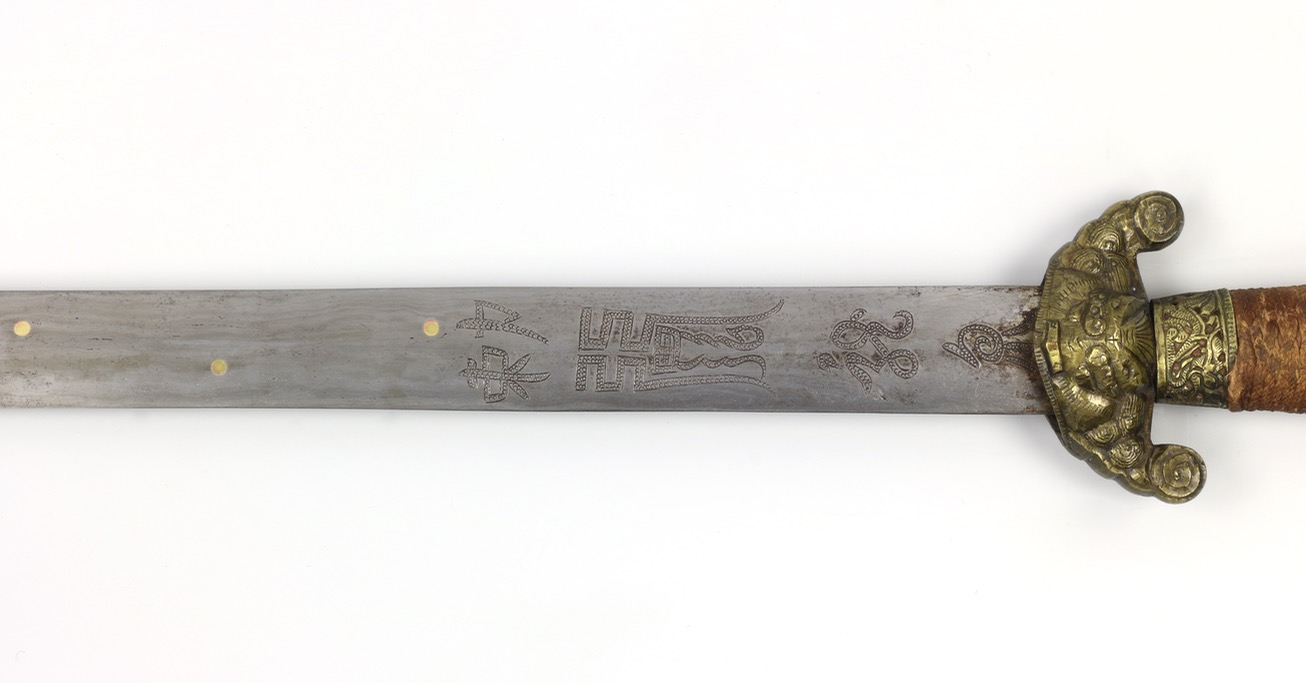

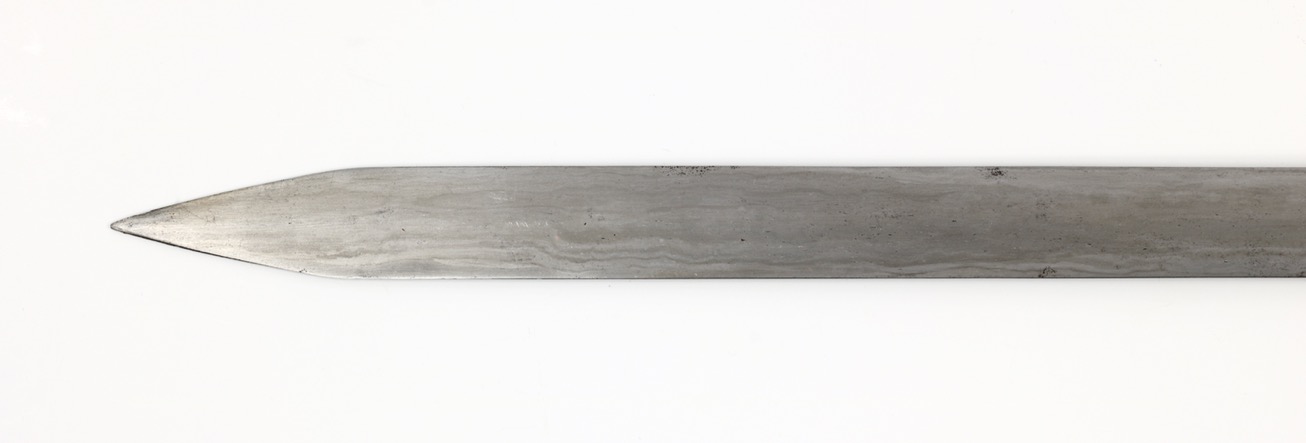
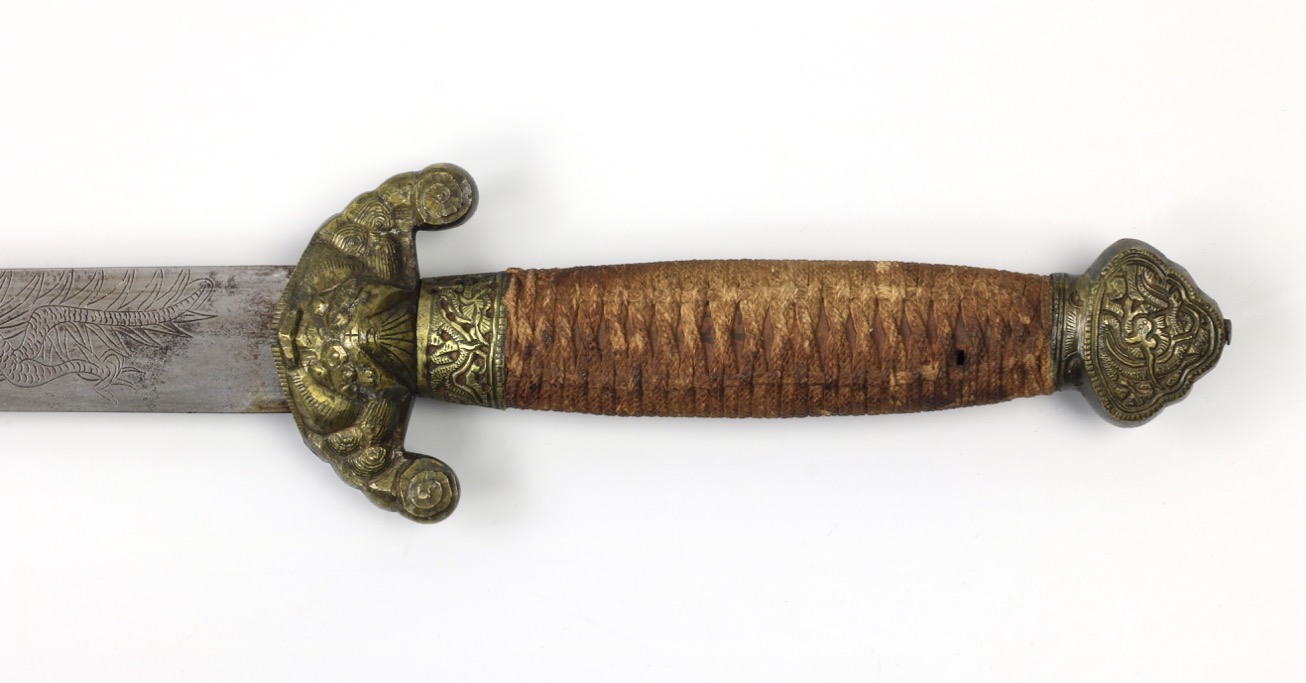

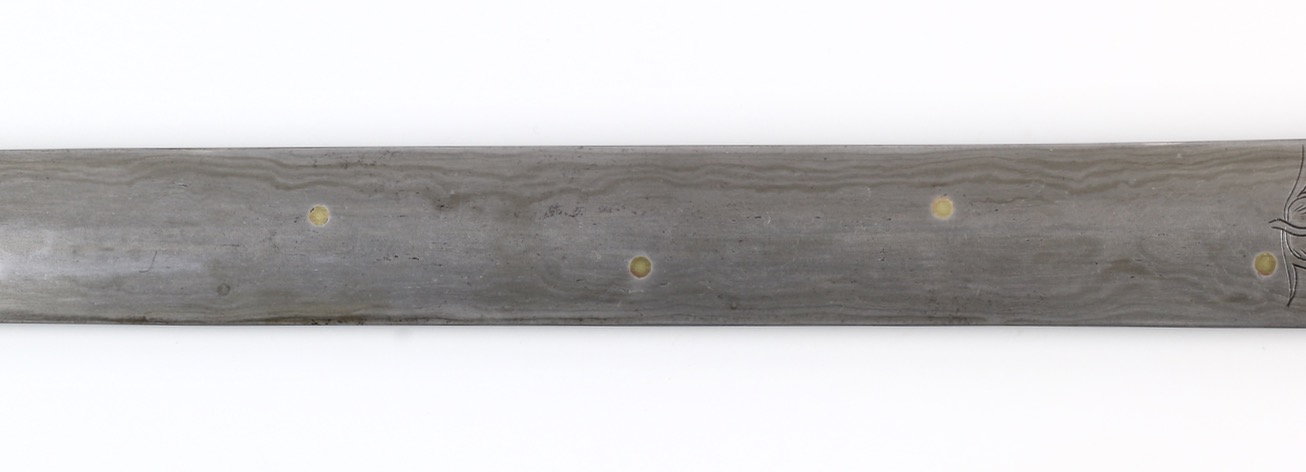
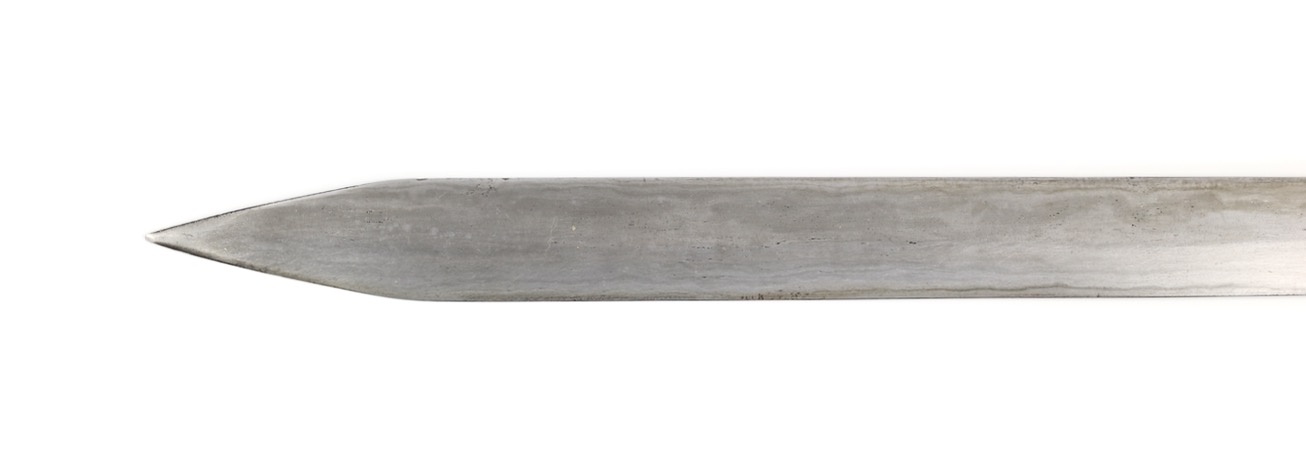
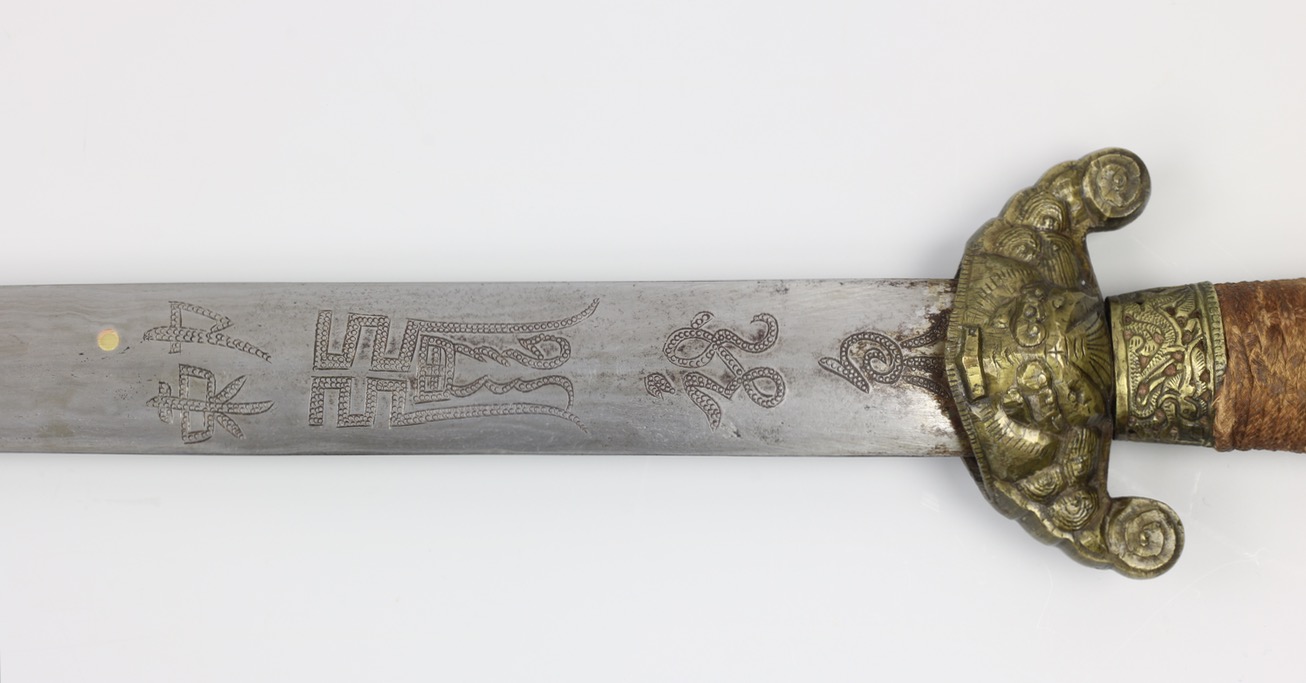
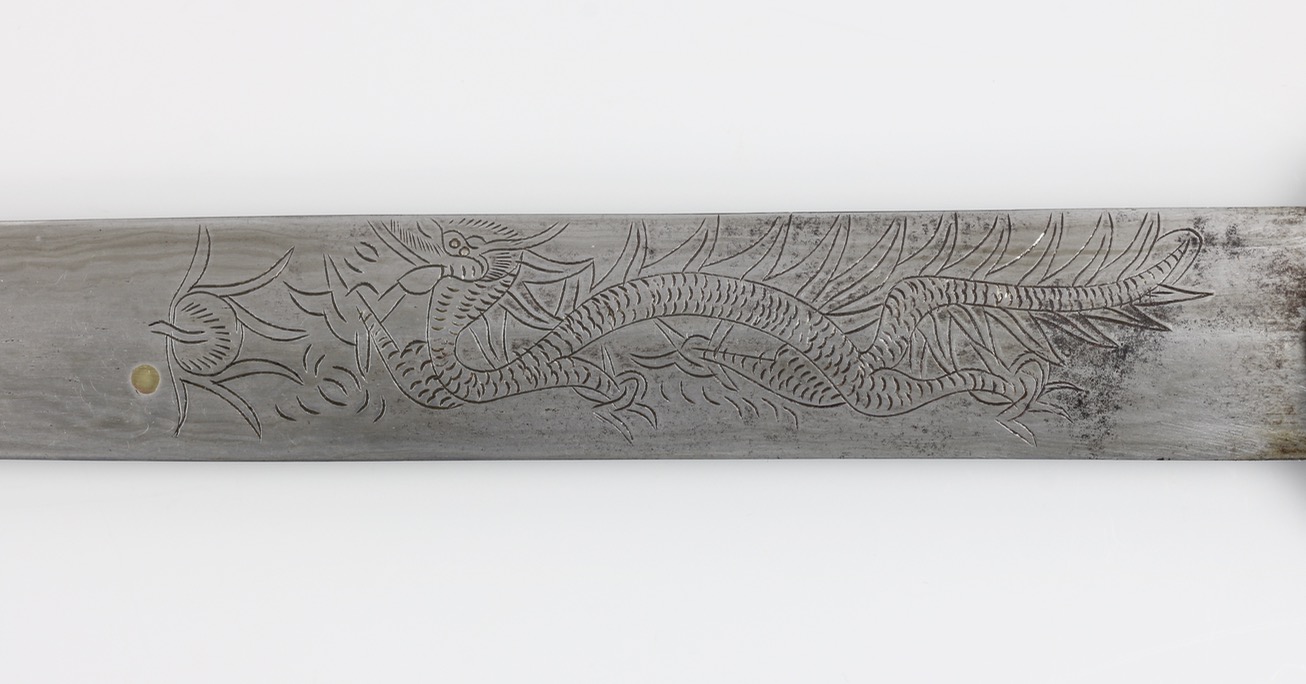
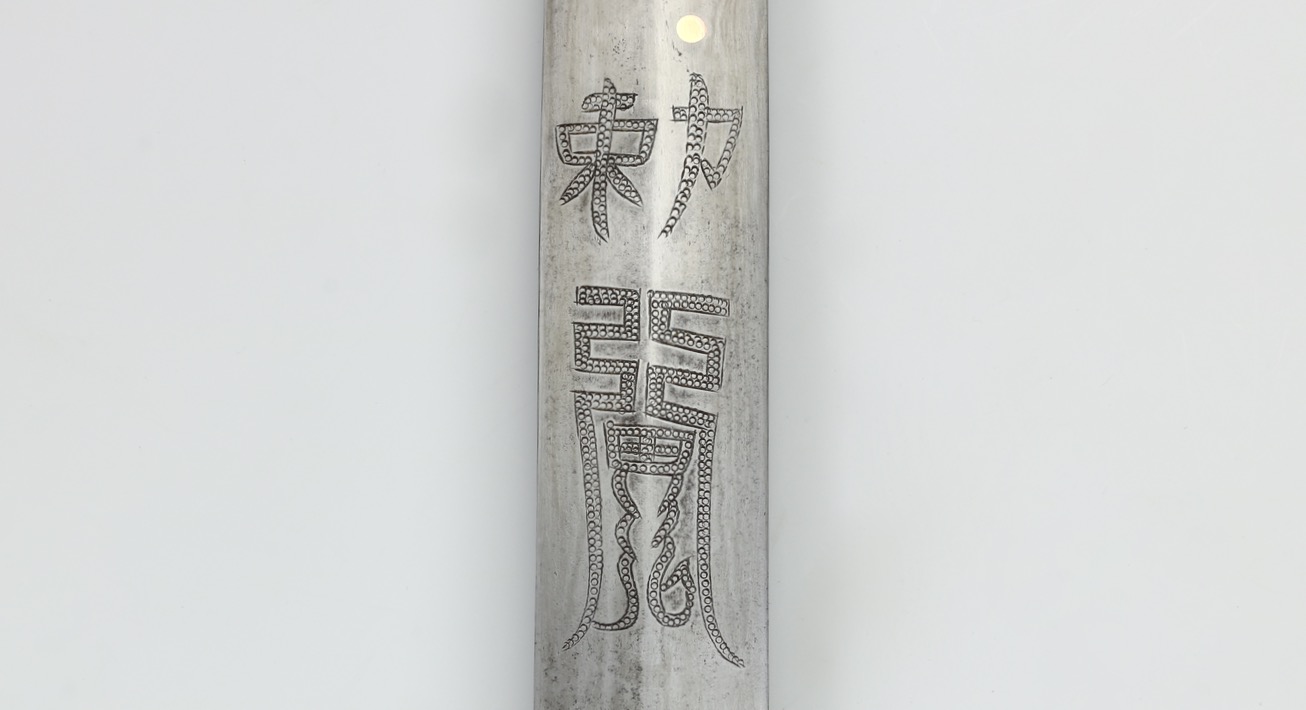

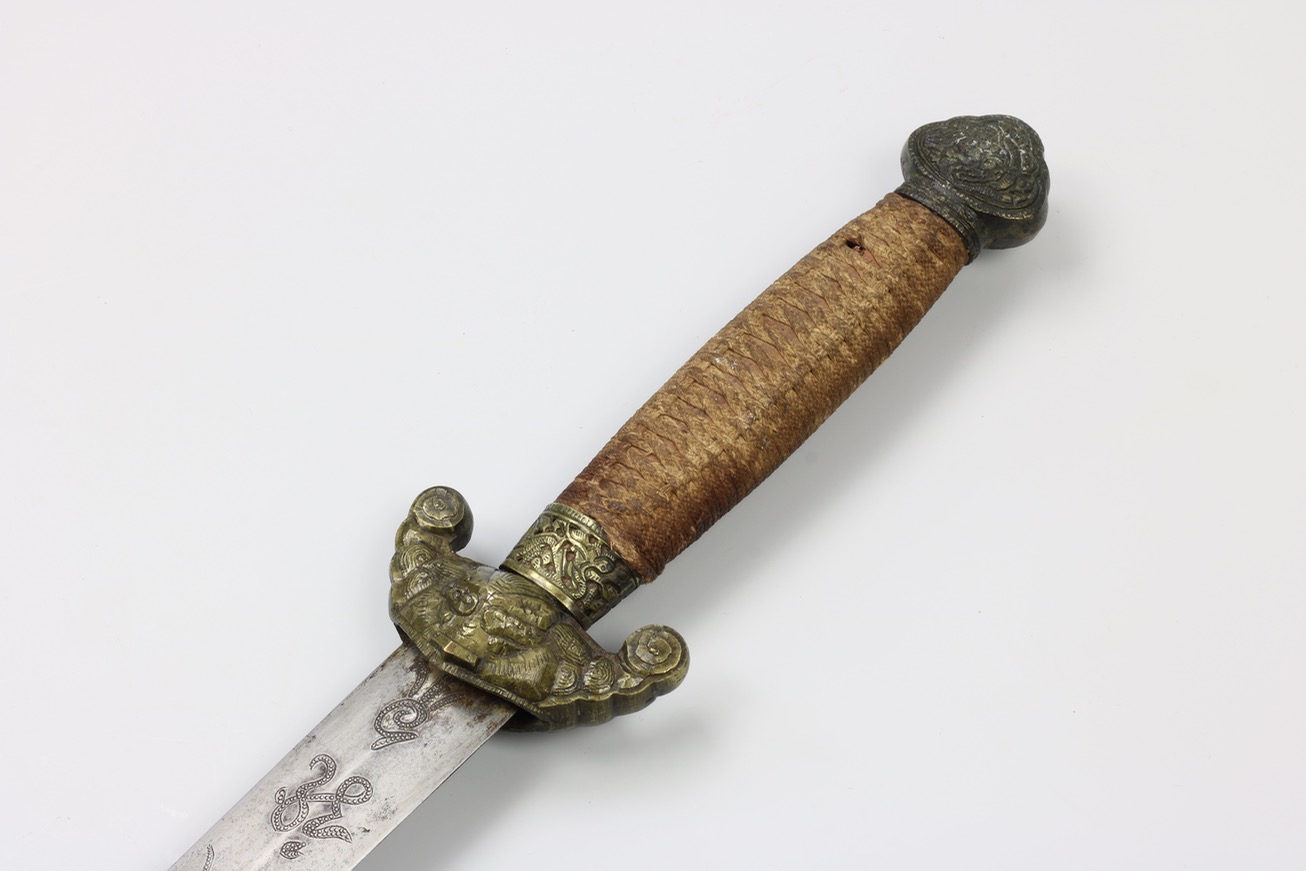
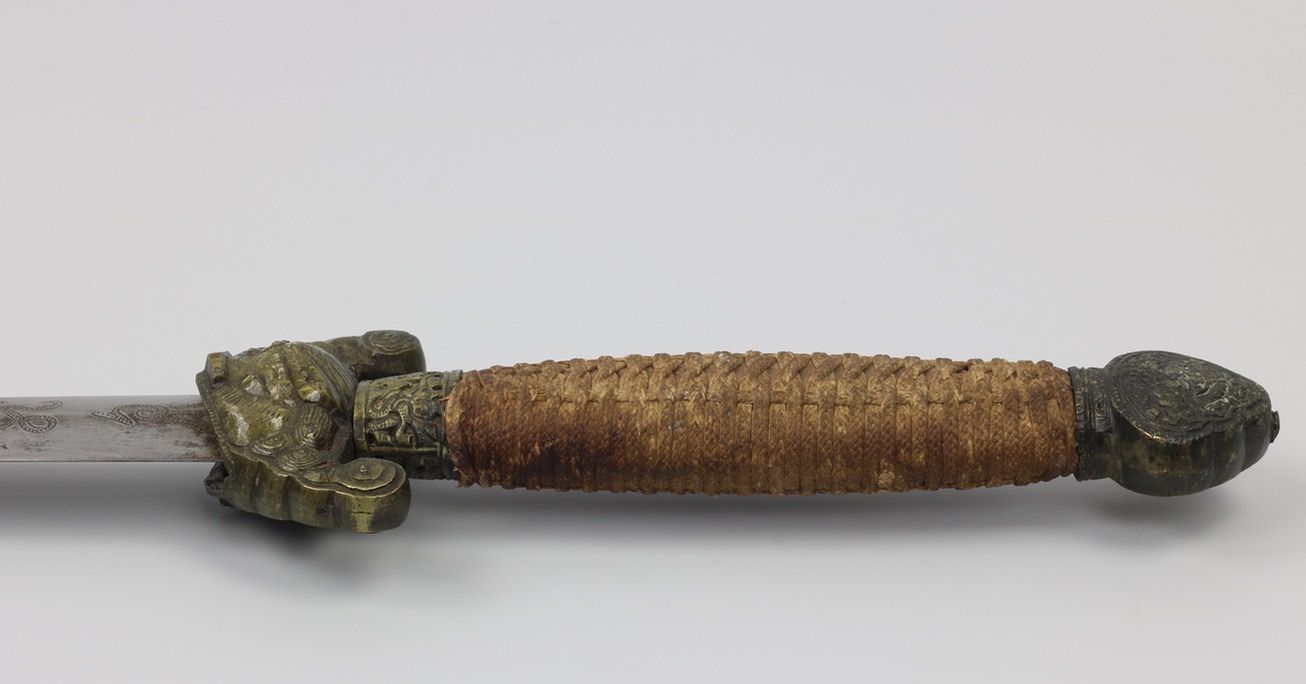



Of classic shape, with a leaf-shaped blade on a socket, connected by a cast bronze base.
A standard pattern Qing military saber, but with the rare addition of a label in Manchu.
A simple utilitarian weapon, probably made for rural martial artists or militia.
In the style of northern work of the 16th and 17th centuries
Probably of Southern origin, with a straight blade and flaring tip.

